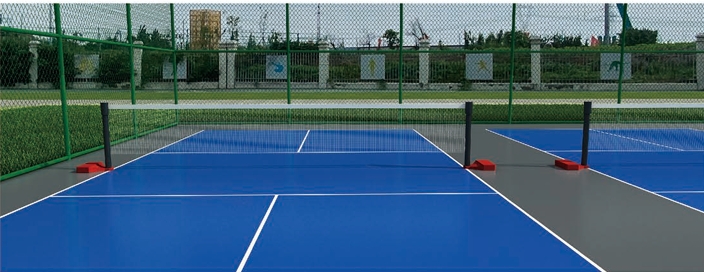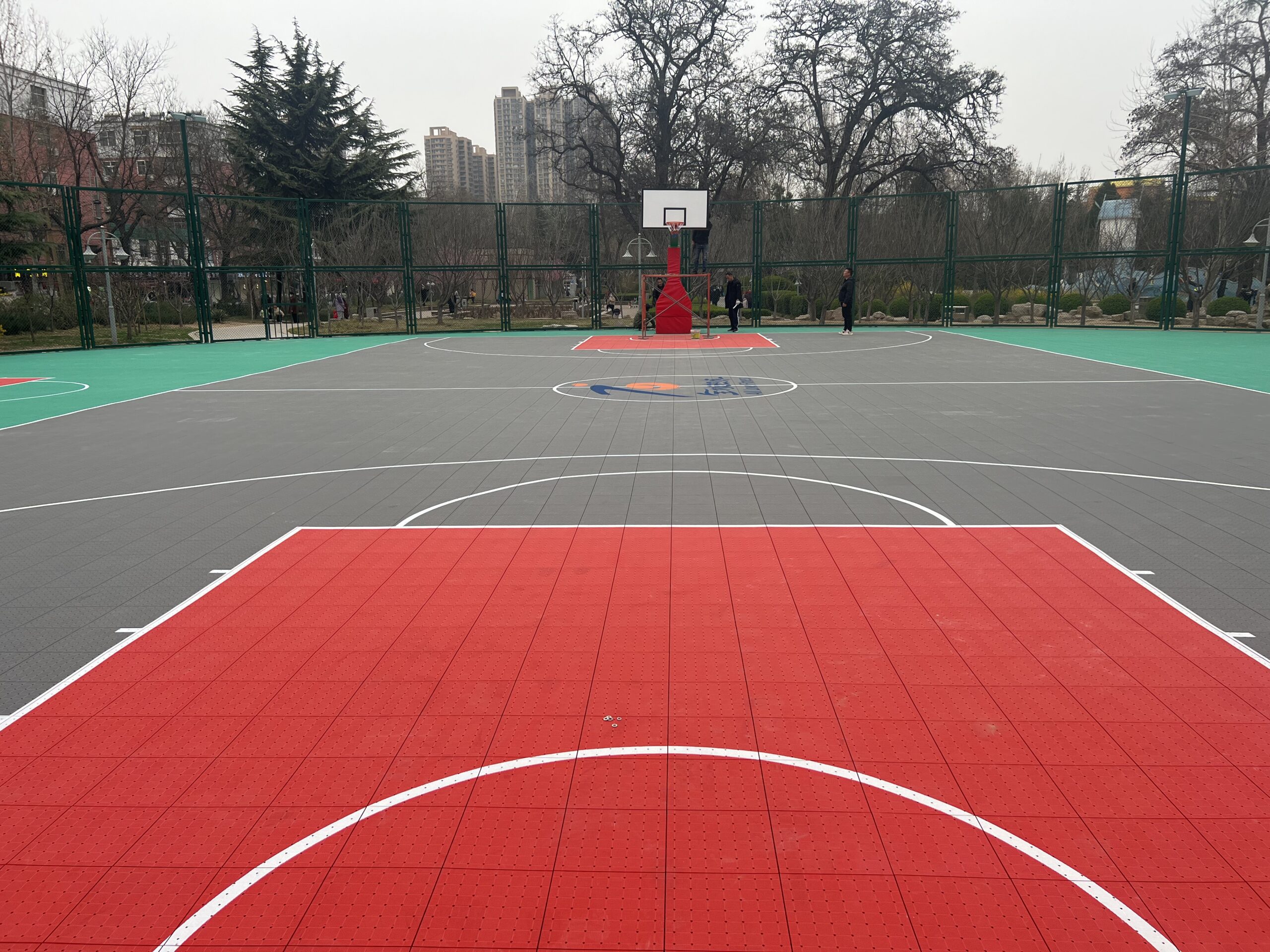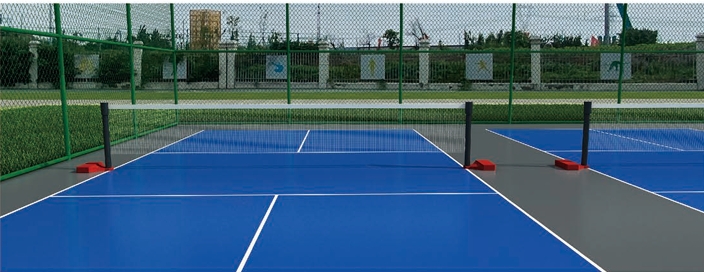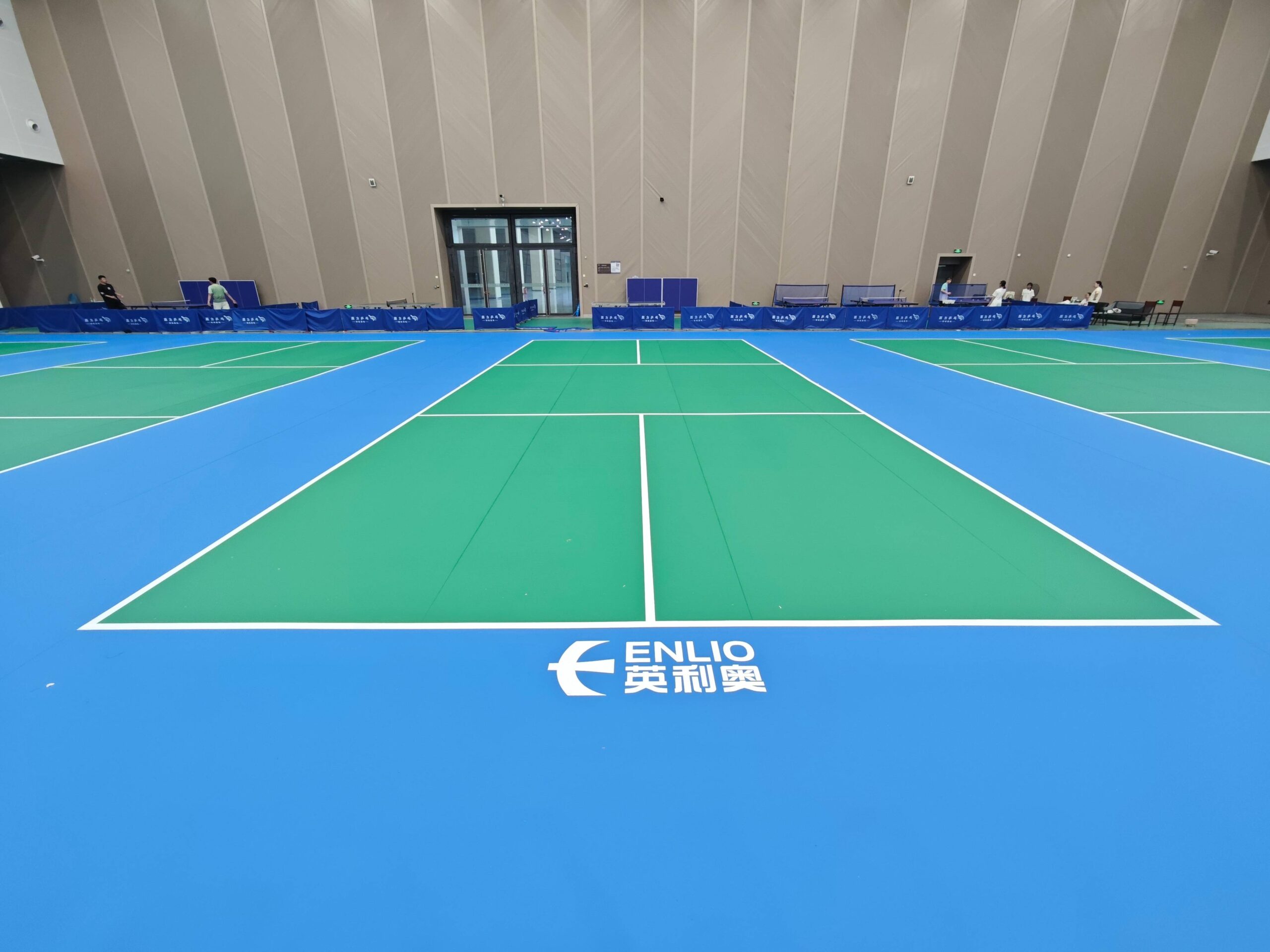Description
Pickleball is one of the fastest-growing sports worldwide, and with that growth comes an important question for players, clubs, and communities: how long does an outdoor pickleball court last? The answer depends on the materials used, the level of maintenance, and the environmental conditions.
In this guide, we’ll break down the lifespan of outdoor pickleball courts, how New Zealand’s strong sun affects durability, and how to extend the life of your court.
Lifespan of Outdoor Pickleball Courts by Surface Type
1. Asphalt or Concrete Base with Acrylic Coating
Typical Lifespan: 15–25 years for the base, 3–7 years for the acrylic surface.
Details: Asphalt or concrete provides a strong foundation that can last decades with proper drainage. However, the acrylic topcoat (the coloured playing surface) usually needs re-coating every 4–7 years to maintain texture and colour, especially under New Zealand’s high UV conditions.
2. Modular Tile Courts
Typical Lifespan: 15–20 years.
Details: Made from interlocking plastic tiles, these courts are weather-resistant and easy to maintain. Individual tiles can be replaced if damaged. In New Zealand, UV-stabilised tiles are a must to prevent fading and brittleness from prolonged sun exposure.
3. Cushioned Court Systems
Typical Lifespan: 8–15 years.
Details: Designed for added player comfort, cushioned courts reduce joint stress but may wear faster under heavy use or extreme weather. In New Zealand, the UV intensity means resurfacing may be required on the shorter side of the 8–15 year range.
How the New Zealand Sun Impacts Pickleball Courts
New Zealand experiences some of the highest UV radiation levels in the world, particularly during summer. This can lead to:
Faster colour fading of acrylic or modular tile surfaces.
Surface breakdown if coatings are not UV-resistant.
Increased maintenance frequency, with more regular re-coating required compared to courts in milder climates.
For long-lasting results in NZ, always choose:
✅ UV-resistant acrylic coatings.
✅ UV-stabilised modular tiles.
✅ Light-coloured surfaces, which absorb less heat and resist fading better than dark colours.
General Factors That Affect Court Longevity
Climate & Weather: UV exposure, rain, and freezing temperatures shorten surface lifespan.
Usage Levels: High-traffic community courts will wear faster than private backyard courts.
Maintenance: Regular cleaning, sealing, and crack repair can significantly extend the court’s life.
Drainage: Poor drainage can cause water pooling, leading to cracks and surface erosion.
How to Extend the Life of Your Pickleball Court
✅ Recoat the surface every 4–7 years to refresh colour and grip.
✅ Clean debris regularly to prevent staining, mildew, or moss growth.
✅ Repair cracks early to stop small issues from becoming major damage.
✅ Ensure proper drainage to avoid water damage.
✅ Protect the court with fencing or covers when not in use.
Conclusion
On average, an outdoor pickleball court lasts 15–25 years, depending on the base material, surface type, and maintenance. In New Zealand, where the sun is stronger than almost anywhere else, it’s essential to choose UV-resistant materials and plan for more frequent resurfacing.
Whether you’re building a backyard pickleball court or a community sports facility, knowing the expected lifespan—and how the local climate affects it—will help you plan ahead and protect your investment.










